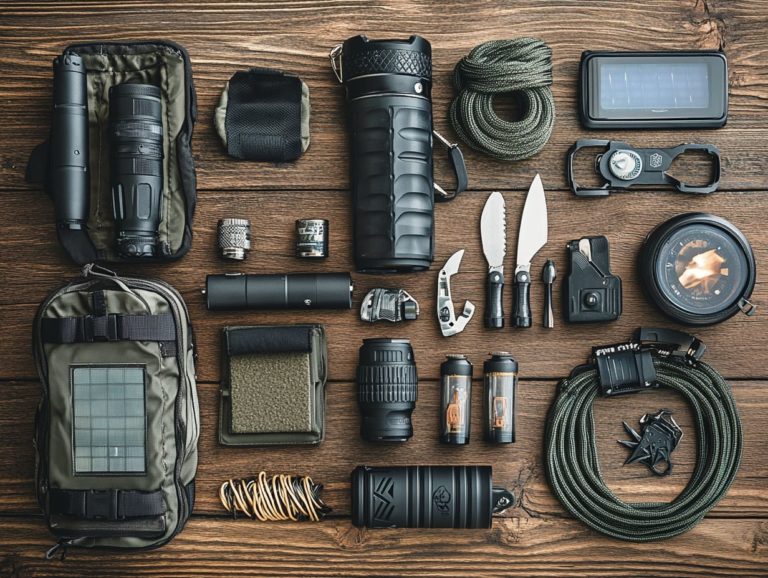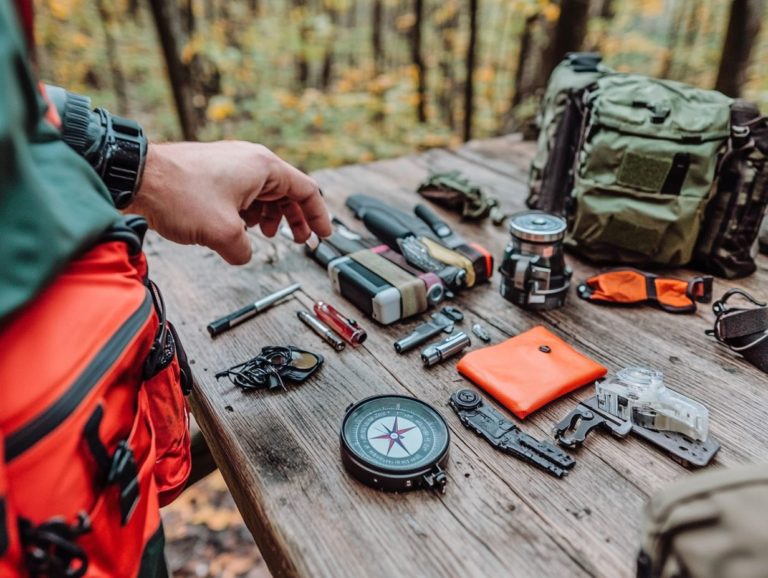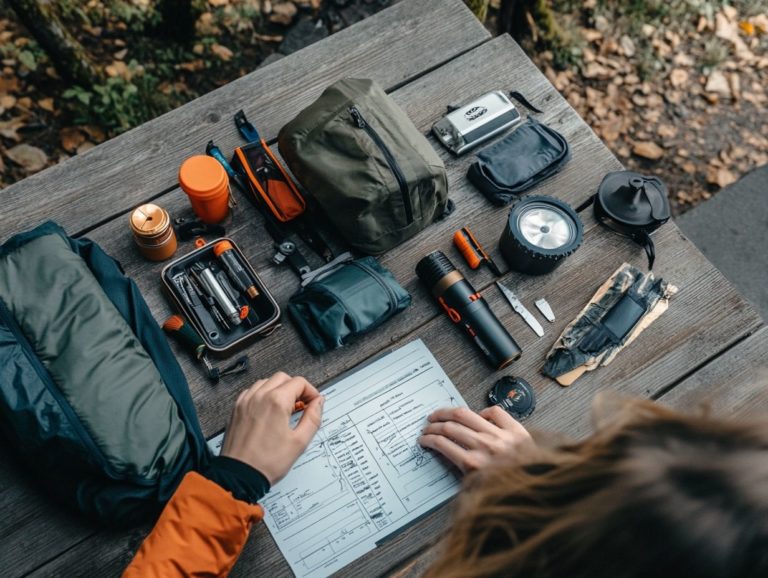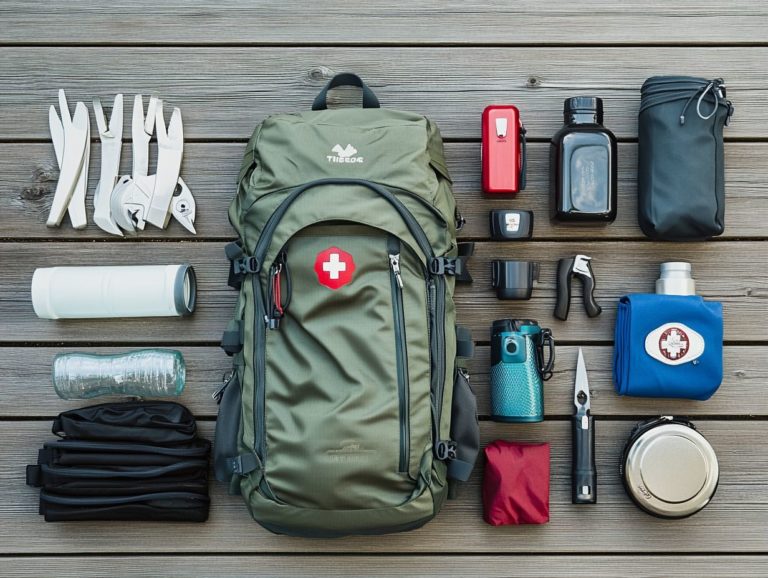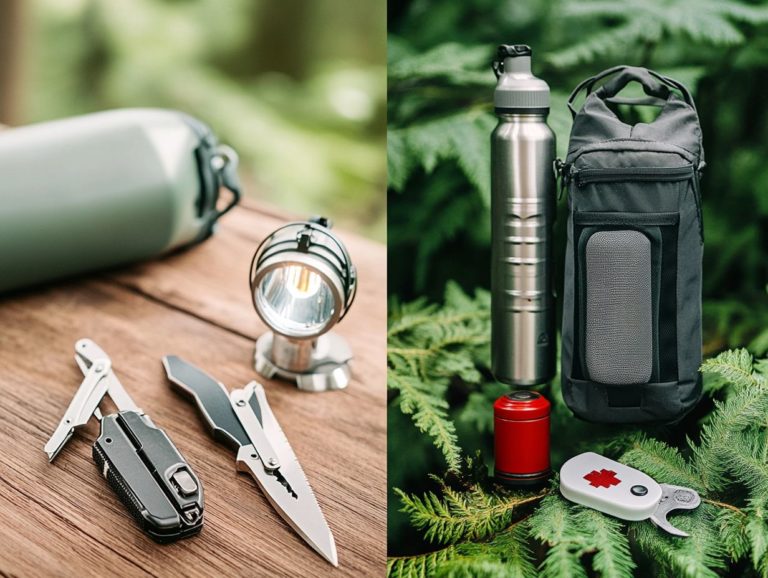How to Use a Compass as Survival Gear
In a world increasingly defined by smartphones and GPS devices, the timeless compass stands as an invaluable tool for navigation and survival, particularly for outdoor enthusiasts who love exploring the wilderness.
Understanding its components and functions is your first step toward mastering this classic instrument. This guide shows you how a compass keeps you oriented in the wilderness, providing a comprehensive overview of using it effectively. You’ll learn step-by-step techniques for adjusting for the difference between magnetic north and true north and taking bearings. You’ll also discover advanced techniques such as triangulation.
We’ll also explore alternative navigation methods like using the sun and stars. Whether you re an outdoor enthusiast or simply curious about navigation, this guide equips you with the knowledge needed to confidently find your way.
Contents
- Key Takeaways:
- Understanding a Compass
- Why a Compass is Essential for Survival
- Using a Compass to Find Direction
- Additional Features and Techniques
- Alternative Navigation Methods
- Frequently Asked Questions
- What is a compass and why is it important for survival?
- How do I use a compass to find my bearings?
- Can a compass be used in any type of weather?
- How do I use a compass to follow a specific direction, including adjusting declination?
- What other features should I look for in a compass for survival purposes?
- Can a compass be used as a standalone navigational tool?
Key Takeaways:

- A compass is crucial for survival. It helps you find your way in unfamiliar terrain.
- Knowing how to use a compass is a valuable skill. Follow our step-by-step guide to use it effectively.
- Besides using a compass, you can also navigate using the sun and stars in emergencies.
Understanding a Compass
Understanding a compass is essential for anyone venturing into the great outdoors. It serves not just as a navigation tool but as a vital lifeline in emergencies. A compass enables you to orient yourself and navigate with confidence, particularly when GPS technology lets you down.
In survival situations, knowing how a compass works can mean the difference between safety and chaos, especially in remote areas where losing your way can escalate into a dangerous situation. This guide highlights the components and functions of a compass, showcasing its critical role in outdoor navigation and emergency preparedness.
Components and Functions
The primary components of a compass include the magnetic needle, the rotating bezel, and the baseplate, each playing an essential role in your navigation journey.
The magnetic needle is finely balanced, aligning itself with Earth’s magnetic field and consistently pointing toward magnetic north. This alignment ensures accurate navigation. You can enhance its effectiveness by adjusting the rotating bezel for declination. For instance, if you’re navigating in an area where declination is westward, simply rotate the bezel to align your map with true north.
To take bearings, face the object you wish to identify and rotate the bezel until the needle aligns with the orienting arrow. This allows for precise plotting on your map. By leveraging these functionalities, you can confidently embark on your outdoor adventures, using technology to enhance your navigation and decision-making skills.
Why a Compass is Essential for Survival
In a world that leans heavily on technology, it s vital for outdoor enthusiasts to understand why a compass remains an essential tool for survival. While GPS devices are advantageous and often lifesavers in emergencies, they can falter due to battery drain or signal loss in remote locales.
A compass serves as a dependable backup, enabling you to navigate the wilderness confidently and make informed decisions. Mastering compass skills boosts your overall safety readiness and prepares you for survival scenarios.
This knowledge allows you to explore the great outdoors with assurance and poise, especially for those who enjoy hiking and backpacking in various terrains.
Summary: A compass is a fundamental tool for outdoor navigation and survival. Understanding its components and mastering its use is crucial, especially when you learn how to use a compass for hiking. Additionally, knowing how to navigate using alternative methods can significantly enhance your safety and preparedness in the wilderness.
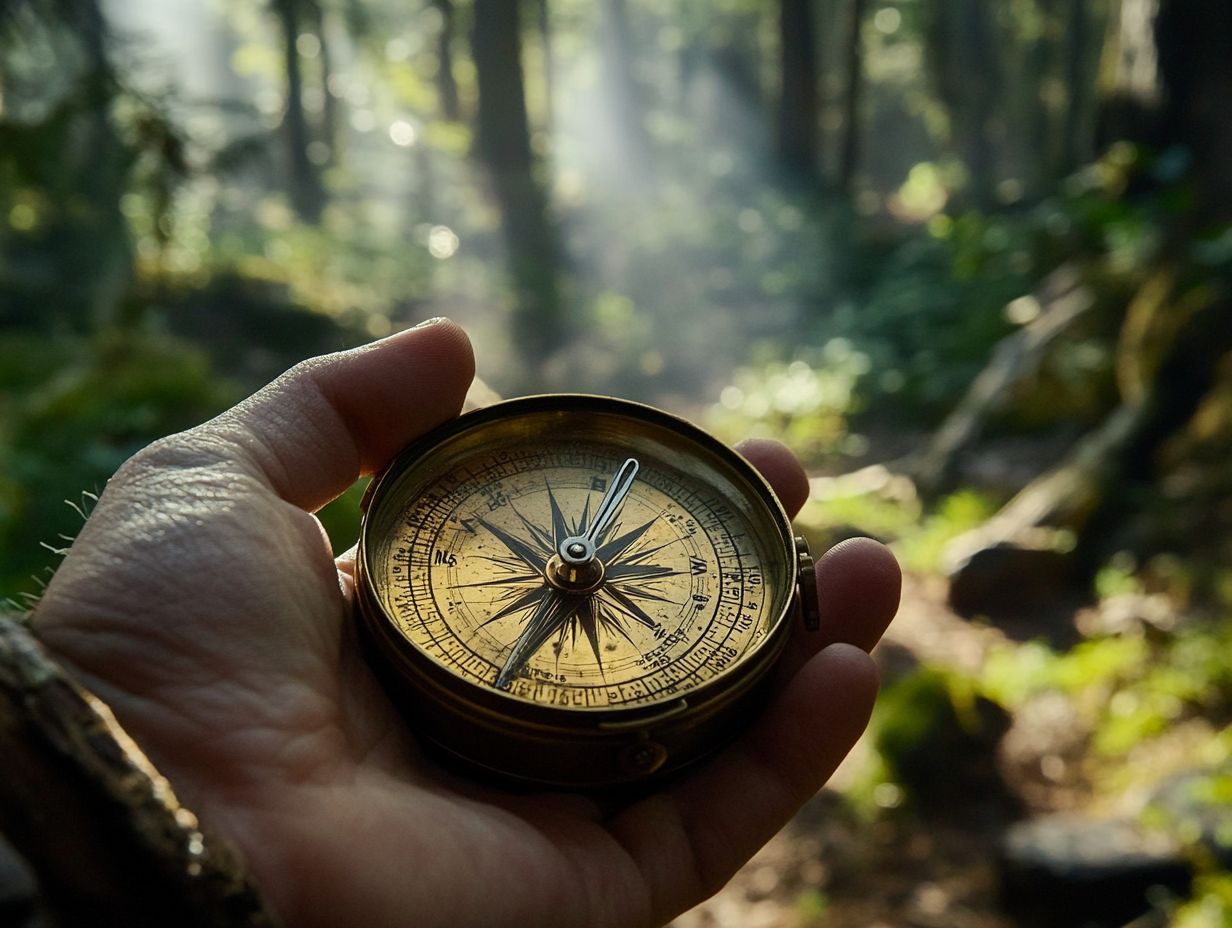
Using a compass for navigation provides many benefits. It enriches your outdoor adventures and boosts your safety, especially in emergencies.
By understanding navigational principles, you can avoid confusion when exploring unfamiliar terrain. Effective navigation streamlines route planning and improves your situational awareness, helping you make quick, informed decisions during unexpected challenges.
For instance, if sudden weather changes or trail obstructions arise, accurately determining your location can mean the difference between a simple detour and a dangerous situation. Learn this skill to explore boldly, ensuring you stay oriented amid the challenges nature presents.
Using a Compass to Find Direction
Using a compass involves a careful method that enhances your navigation skills, especially in the wilderness. Mastering how to take a bearing and follow it with precision allows you to navigate challenging terrains confidently.
This guide will familiarize you with compass functions and show how GPS can support your navigation efforts, particularly during emergency situations where quick decisions are vital.
Step-by-Step Guide
This step-by-step guide will help you master navigation with a compass, preparing you for any wilderness adventure.
Understanding how to use a compass can make your outdoor experiences safer and more enjoyable. Start by getting to know the compass’s essential parts, like the magnetic needle, housing, and baseplate.
Your journey begins by taking a bearing. Align the direction of travel arrow with your destination on the map. This allows you to follow your bearing effectively. Remember to account for declination, the difference between magnetic north and true north, especially in varied terrains.
Once you’ve set your bearing, practice following it by keeping the needle steady. Navigate through different environments, whether in a dense forest or an expansive field. This practice builds your confidence and familiarity with the compass for smoother navigation during your wilderness adventures.
Additional Features and Techniques
Beyond simple navigation, a compass offers additional features that enhance your outdoor skills, particularly for wilderness survival.
Understanding declination adjustment is crucial; it helps refine your compass reading based on the difference between magnetic north and true north.
Honing your skills in triangulation enables you to locate yourself accurately on a map, turning the compass into a critical tool for informed decisions in survival situations.
Declination Adjustment and Triangulation

Declination adjustment and triangulation are key techniques that enhance your compass functionality. They allow for greater precision in navigation.
By accounting for magnetic declination, the angle difference between magnetic north and true north, you can correct your bearing for improved accuracy. This skill is especially valuable in remote wilderness areas where GPS signals may be unreliable.
Triangulation helps you determine your exact position by taking bearings to two or more visible landmarks. This method is critical in orienteering, especially in dense forests or urban settings where visual references may be limited.
Mastering these techniques sharpens your navigational skills and elevates your confidence in various outdoor pursuits.
While a compass serves as a fundamental tool for navigation, alternative methods like using the sun and stars can effectively guide you on your outdoor adventures.
Understanding how to navigate by celestial bodies becomes especially beneficial when a compass isn t available or when you re exploring unfamiliar terrain.
These traditional methods beautifully complement contemporary navigation tools like GPS. They provide reliable ways to stay oriented and make sound decisions, ensuring your journey remains both safe and enjoyable.
Using the Sun and Stars
Navigating by the sun and stars is a timeless technique for dependable orientation in the great outdoors.
Understanding the sun’s position throughout the day is essential for determining cardinal directions. For instance, when the sun rises in the east and sets in the west, you can gauge your location by noting its midday position in the southern sky.
At night, the stars become your guiding lights. The North Star, clearly visible in the Northern Hemisphere, can lead you to true north.
By mastering these celestial navigation methods, you can elevate your outdoor adventures and truly connect with nature. This fosters self-reliance and boosts your confidence in wilderness settings.
Frequently Asked Questions
What is a compass and why is it important for survival?

A compass is a navigational tool that uses the Earth’s magnetic field to determine direction. It’s crucial for survival as it helps you navigate through unfamiliar terrain and prevents you from getting lost.
How do I use a compass to find my bearings?
To find your bearings, hold the compass flat in your palm and rotate your body until the red end of the needle points north on the compass. This helps you determine your direction and orient yourself on a map or in the surrounding area.
Can a compass be used in any type of weather?
Yes, you can use a compass in any type of weather as long as it s not affected by strong magnetic fields. However, keep the compass dry and away from extreme temperatures to ensure accuracy.
How do I use a compass to follow a specific direction, including adjusting declination?
To follow a specific direction, first determine where you want to go. Rotate the compass bezel until the desired direction aligns with the direction of travel arrow on the base plate. Then, hold the compass flat in front of you and follow the direction of the needle to stay on course.
What other features should I look for in a compass for survival purposes?
Besides basic directional capabilities, look for a compass with a base plate that has a ruler and map scales for measuring distances. Some compasses also include a magnifying glass for reading small details on a map.
While a compass is valuable, it shouldn’t be your only navigational tool. It s essential to also have a map and knowledge of basic navigation skills for safe and accurate travel.
Practice your navigation skills today and explore the outdoors! You never know what adventures await!

